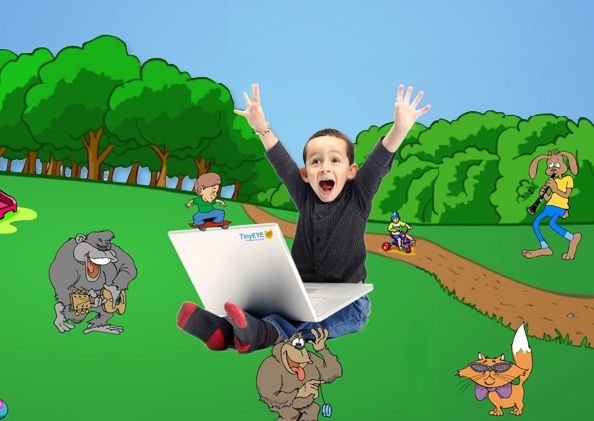As Melbourne enters lockdown #3 – Speech Pathologists Anna and Nataly are joined by some parents of DWSP clients in this Q&A session.
They share their perspectives and give us the low-down on how online therapy is going for them.
Q. What has surprised you about doing your therapy sessions online?
Anna: How much I have learned, enjoyed, and how similar it can be to typical face-to-face therapy. I have also been pleasantly surprised with how functional the therapy can be! It’s allowed me to incorporate therapy with clients toys, their interests, and by using items in their own home.
Nataly: I have been amazed at how well parents and clients have transitioned between face to face to telehealth. More so, I have experienced immense collaboration between myself and the parents during my online sessions. Parent involvement has increased and it’s nice to see how much the families are getting out of the therapy process.
Parent: – My son has been so engaged and has been focusing much more compared to physical sessions. The video clips and online speech and OT games are fantastic.
Parent: – Since therapy moved to online, I have found that my children have adapted a lot better than I have. Obviously, my preference is for face to face, however in the current circumstances, the children are more than happy to welcome their therapists (Nataly & Erica) into their home. Sometimes following instructions is a bit too hard when their surrounded by their toys, but mostly they are compliant.
Q. What has been the most challenging part of online sessions and how have you managed it?
Parent: – Computer malfunctions and when the internet slows down and causes video delays. We’ve managed it by sometimes restarting or turning off other electronic devices connected to the home WIFI.
Anna: – It’s crazy to think that online therapy is what I now know best. As an early career therapist, I now have more teletherapy experience compared to face-to-face (I never thought I would be saying those words!). The biggest challenge that I have found is engaging the clients, in particular young preschoolers. I quickly realised that I can still use books (i..e by including the client in the story), incorporate show and tell (this has been a popular one!) within my session and also support the parents to work with the child rather than doing everything myself. It’s also been a great opportunity to collaborate and learn from our OT team to help with emotional, sensory regulation, and engagement.

Nataly: – One of the biggest challenges I have experienced so far is not being able to provide enough face to face support to some of my clients. For example, those clients who have goals that require some tactile cues, it is harder to help the parent understand what to do without showing them an example. However, this has created great opportunity in our sessions and where I’ve seen most of my parents involvement in therapy increase much more than in the clinic (where I would do it myself). It’s helped us develop a real partnership – and parents and I have problem solved by trying different techniques that best works for that client. For example, after I explained what I would do, Mum helped her child achieve the articulation sound by putting Nutella on a spoon and place it in their child’s mouth to help them make the speech sound – and it worked perfectly!
Parent: – As mentioned above, being surrounded by their own toys can be very distracting and may lead to them losing interest in what their therapist has organised for the session. What I do commend is my therapists ability to be able to either gently return their attention to the current task or to switch tasks to whatever my child(ren) has found to be more interesting, or just to work with whatever my child is using!
Q. How do you think kids (clients) respond to sessions delivered this way?
Anna: – Some kids have loved online therapy (and their parents!), so much that I don’t think I’ll ever be meeting them in person. That want to continue with online therapy indefinitely! It has definitely been convenient for a lot of families, it has reduced travel time, you can even do therapy in your pyjamas, and they have more flexibility with their sessions around nap times or timetables of other siblings, without the challenges of travel and parking. It’s been wonderful to know we don’t have to stop progress on our goals just because we’re in lockdown.
Nataly: – I agree with Anna! For some clients, the way I deliver therapy isn’t different from a face-to-face session. They have seen the advantages of reduced travel time and the same quality of therapy. For some clients, child engagement has been a challenge. However, it has led me to reflect, tailor my approach and better myself as a clinician, and it’s also been fun to see the child and family in their own setting, where I can make sure my activities are really relevant to them. We can do therapy outside, in the garden, at lunch time at the kitchen table – we couldn’t do any of this in the clinic setting.
Parent: – My son loves it, he is very engaged by anything electronic and when the therapist screen shares and he can also interact with the screen to provide hisanswers he loves it.
Parent: – My children have mostly adapted well to these sessions – and have welcomed their therapist into their own space.
Q. How does the relationship between parent and therapist change from a face to face session?
Anna: – It is basically the same, if not it might even be easier online as there can be more parent involvement! For example, my parents are also providing direct feedback when working on articulation or language or any other goals. It’s a great way to generalise what we’re doing in the session to home practice as I can provide direct feedback to the parents.
Nataly: – The change from face to face to telehealth has made me see parents as my therapy partner in a different light. Typically we see parents and their child at the clinic or at school and we see only what is in front of us (i.e. mainly focusing on therapy goals). However, during these unforeseen times, parents have taken on many hats. When seeing parents via telehealth we get a small glimpse of what they have to juggle with at home, school and everything else. This has made me appreciate parents so much more and realise that I have a duty not only to my clients but to the parents to make the material I provide as practical as possible.
Parent: – It hasn’t really changed, apart from the last 5 minutes when we get dedicated time to chat about the session and set goals for our time at home.

